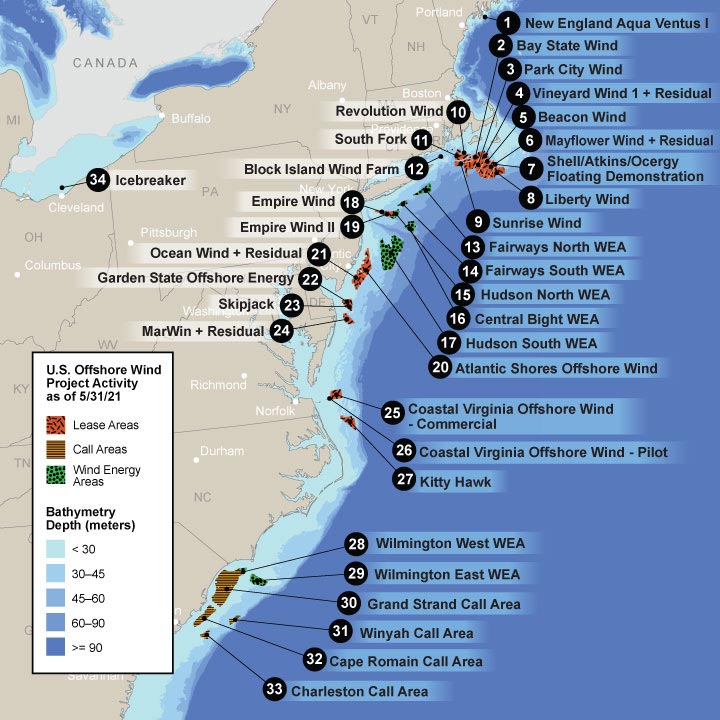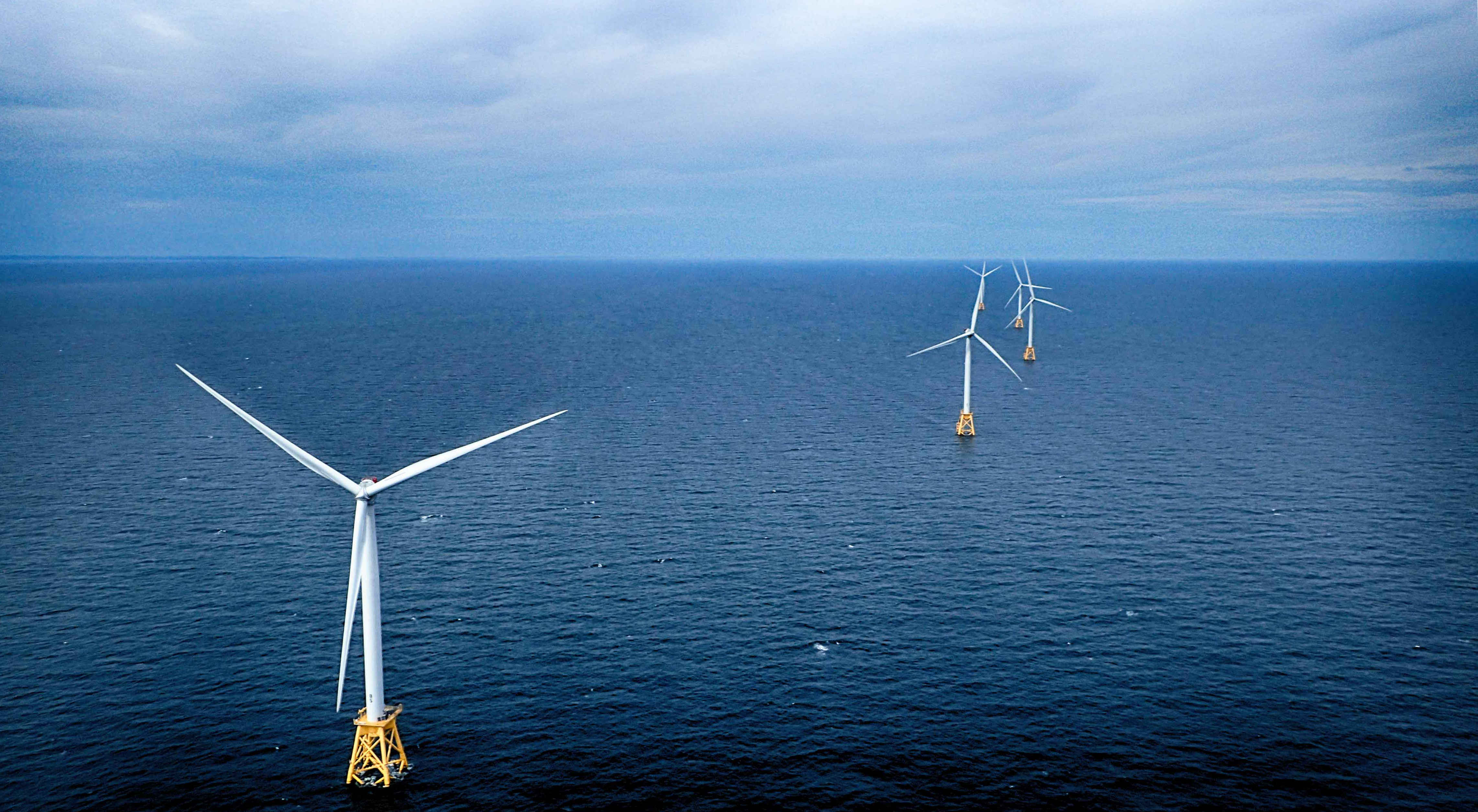


(Credit: EIA)
Page Copyright CCCarto.com 2024
The development of offshore wind farms along the U.S. East Coast began gaining momentum in the early 2010s. The first significant steps were taken with the approval of projects like the Cape Wind project in Massachusetts and the Block Island Wind Farm in Rhode Island. The Block Island Wind Farm, which became operational in December 2016, was the first commercial offshore wind farm in the United States, marking a critical milestone in the country’s transition to renewable energy.
Offshore wind turbines are typically anchored to the ocean floor using several methods, depending on the water depth and seabed conditions. In shallow waters, monopile foundations—large, cylindrical steel tubes driven into the seabed—are commonly used. For deeper waters, gravity-based foundations, which are heavy concrete structures that rest on the seabed, or floating platforms anchored to the seabed with cables are employed. Floating platforms are a newer technology that allows turbines to be placed in much deeper waters where traditional foundations would not be feasible.
The generated electricity is transmitted to shore via subsea cables. These cables are laid on the seabed and are buried in trenches to protect them from damage. The electricity is then transported through these cables to an offshore substation, where it is converted from high voltage to a more manageable voltage for further transmission to the grid. The electricity travels from the offshore substation to onshore substations through underground or undersea cables, ultimately connecting to the local power grid.
Offshore wind turbines are quite large, with modern models often reaching heights of over 600 feet (180 meters) from the seabed to the tip of the blade. Each turbine can generate between 3 to 12 megawatts of power, depending on its size and design. The energy output of a wind farm depends on the number and size of the turbines; typical offshore farms might consist of 20 to 100 turbines or more.
Safety considerations for offshore wind farms include measures to ensure they do not pose hazards to shipping lanes. Turbines are usually placed in designated areas away from major shipping routes, and their locations are marked on nautical charts to prevent collisions. Marine traffic regulations and careful planning help mitigate potential risks.
Environmental impacts are carefully monitored. The construction and operation of offshore wind farms can affect marine life, including whales and seabirds. During the construction phase, noise and vibrations might impact marine mammals, but once operational, wind farms generally have a minimal impact on sea life. Some studies suggest that the artificial reefs created by the turbines can enhance local marine ecosystems. Birds may need to be carefully managed to avoid collisions with turbine blades.
The lifespan of a wind turbine is typically around 20 to 25 years. After this period, turbines may be decommissioned, with components either recycled or disposed of in an environmentally responsible manner. Advances in technology and materials are continually improving the efficiency and longevity of wind turbines, potentially extending their operational life.
Overall, offshore wind farms represent a growing segment of renewable energy infrastructure in the U.S., contributing to a cleaner energy grid while addressing various safety and environmental considerations.
Avangrid Renewables, LLC, North Carolina,Commercial Lease, 25 Year Lease
Bay State Wind LLC, Massachusetts, Commercial Lease, 25 Year Lease
Cape Wind Associates LLC, Massachusetts, Commercial Lease, 28 Year Lease
Commonwealth of Virginia Dept. of Mines, Virginia,Research Lease, 30 Year Lease
Deepwater Wind New England LLC, Rhode Island / Ma,Commercial Lease, 25 Year Lease
GSOE I, LLC, Delaware, Commercial Lease, 25 Year Lease
Ocean Wind LLC, New Jersey, Commercial Lease, 25 Year Lease
Statoil Wind US LLC, New York, Commercial Lease, 25 Year Lease
The Narragansett Electric Company, RI, Right-of-Way Grant Lease, 50 Year Lease
US Wind Inc., New Jersey, Commercial Lease, 25 Year Lease
Vineyard Wind LLC, Massachusetts, Commercial Lease, 25 Year Lease
Virginia Electric and Power Company, Virginia, Commercial Lease, 33 Year Lease



(Credit: EIA)
Page Copyright CCCarto.com 2024